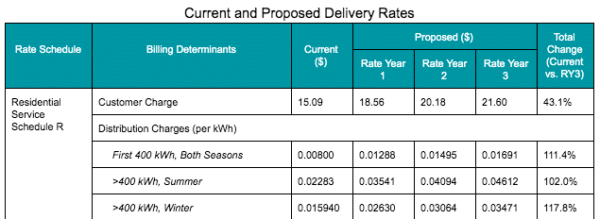It can be argued that no major city or state in the nation is planning as rapid a renewable-powered transformation of its energy use as Washington D.C. The capitol’s newly minted 100% by 2032 renewable energy mandate makes even Hawaii look like a laggard, and its goals for local solar and electrification of transportation lead the nation.
Late last week we got a look at how the district’s utility plans to handle this transition in terms of investments and customer rates. And while investor-owned utilities are rarely shy in terms of asking for more from regulators, the price that PEPCO is asking for its part in enabling this transition is particularly steep, as revealed in a recently filed multi-year rate case.
For starters, The Potomac Electric Power Company (PEPCO) is planning to invest more than $300 million annually over the next five years in its distribution system, which it says is preparation for the move to a city powered by behind-the-meter solar and where electric car charging is ubiquitous.

And for this ROE, the company would like to reward itself with a 10.3% return on equity (ROE) by 2022, up from the 9.52% that it currently earns. And on top of this, PEPCO would like to raise its fixed charges on residential customers to $21.60 by that date, which would be one of the highest such charges in the nation.
Ben Inskeep, senior analyst at EQ Research, notes that none of these requests are particularly unusual for a utility, but that while utilities often make such big asks, that they are usually rebuffed by state regulators. ROEs usually come back in at less than 10%, and the residential fixed charge increases that are granted are usually much smaller than what utilities ask for.

And while PEPCO’s says that it is doing everything that it can to support the rapid transition to renewables, imposing such a high fixed charge is not in line with that goal. “Increasing the fixed charge could dampen the incentive for behind-the-meter solar,” confirms Inskeep.
Overall, PEPCO’s investments would cause the electricity rates for the average customer, who uses 692 kilowatt-hours of electricity per month, to increase 7% in 2020, 4% in 2021 and 4% again in 2022 – although the 2020 rate increase would also be the result of paying for investments in 2018 and 2019. This would mean average monthly bill increases of $6.09, $3.86 and $3.52 per month in each of those years.
Fortunately the Clean Energy Act which mandated the move to 100% renewable energy will provide bill assistance to low- and moderate-income customers. They are likely to need it if regulators approve even some of what PEPCO is asking for.
And as is always the case in utility rate cases, it is not easy to tell how much of what the utility is asking for is needed, and how much is PEPCO milking the process – and its ratepayers.
EQ Research will have further analysis of this case available today.
This content is protected by copyright and may not be reused. If you want to cooperate with us and would like to reuse some of our content, please contact: editors@pv-magazine.com.









These are ridiculous prices. The average citizen can put a solar station on their roof that can supply all their power needs. It is quite easy for an individual to build their own system for three to four cents a Kwh. I can build one myself for under three thousand. Five thousand and I could go quite elaborate.